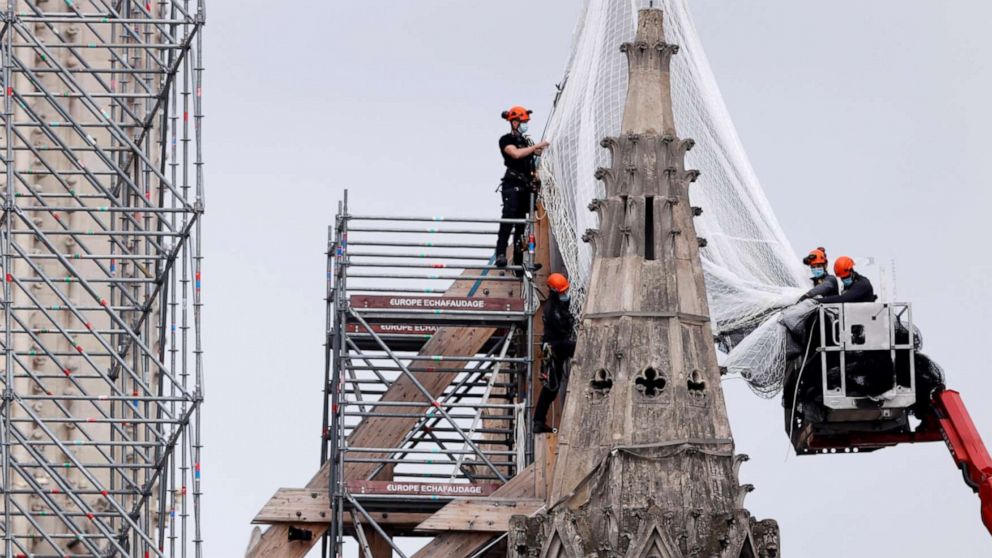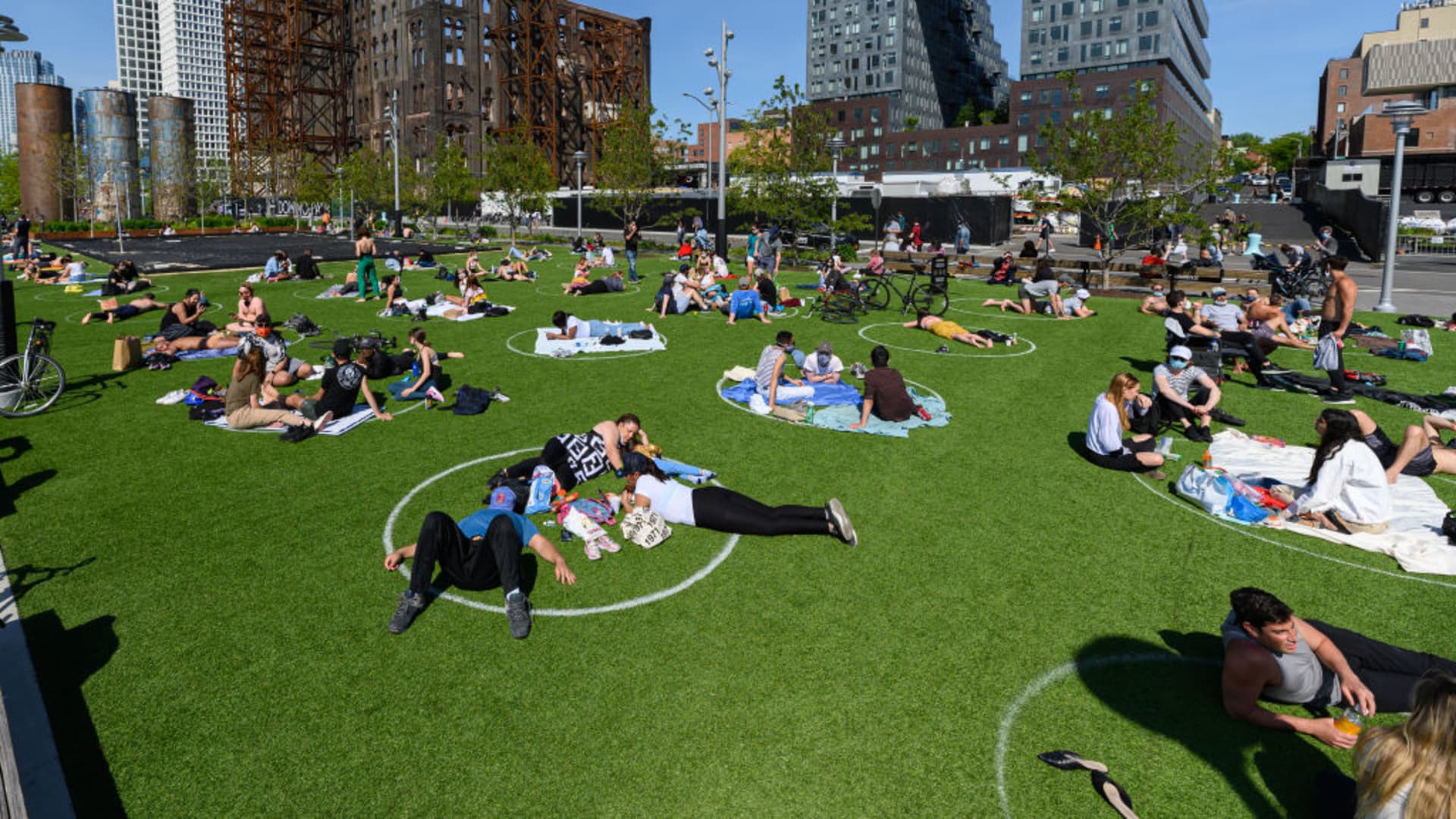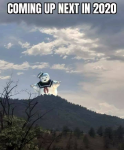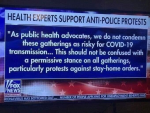SAN FRANCISCO - For 49 years, Jinky Demarest de Rivera has lived and thrived in dense,...

www.greenwichtime.com
The pandemic is making people reconsider city living, trading traffic for chickens
Heather Kelly and Rachel Lerman, The Washington Post Published 7:01 am EDT, Monday, June 1, 2020
Blake Stelle moved in with her parents after losing her television production job in Los Angeles.
SAN FRANCISCO - For 49 years, Jinky Demarest de Rivera has lived and thrived in dense, vibrant cities. The nonprofit finance director grew up in Manhattan and for the past 16 years has made a home in Oakland, where they live with their wife, Sara Demarest de Rivera, and dog, Onyx. Now the family is packing everything up for a large house in New York's rural Hudson River Valley with enough room for chickens.
Two months of sheltering in place in their rented two-bedroom apartment gave the pair some unexpected clarity about what was important to them. And new policies letting them work remotely indefinitely at their respective jobs gave them an opportunity to do something about it. They wanted to be closer to their aging parents on the East Coast, and saw no hope of ever owning in one of the most expensive real estate markets in the country.
"There's nowhere we want to be other than with our families right now. It's really heartbreaking to be far away," said Sara Demarest de Rivera, who grew up in rural Maine and is excited to get back to her roots. "We've gained a lot from living in the city, but as we get older, and going through this pandemic, we see the value of being close to family and having land."
They aren't the only ones making a big move. After months of forced stillness, unable to make many major decisions or follow through on some already planned, people are jumping into one of the biggest life changes there is and moving out of cities. For some, it's a chance to be closer to family, which feels more urgent in the midst of a global health scare. For a large swath of people in the country's most expensive cities, it's a way to get more living space and be closer to nature, something increasingly made possible by the growing trend of remote work. And for many others it's not really a decision at all, but a necessity in the face of growing job losses and still sky-high rents.
Malia Guyer-Stevens left New York City to stay with family in Cape Cod when her summer job prospects dried up and she couldn't sublet her apartment. Kendall Perry similarly left the city, at least temporarily, when the coffee shop they worked at closed during the pandemic and regular freelance jobs as a musician became scarce. Perry is staying with family in Longmont, Colorado, but trying to make it back as soon as more cafes reopen.
They are part of a broader U.S. shift after the global coronavirus pandemic hit the United States, triggering a major restructuring of our lives. More than 100,000 people in the country have died of covid-19 in the past three months. To try to save lives, governments have shut down economies, prompting more than 40 million to apply for unemployment over the past ten weeks. Other workers have been sent to work remotely for months, while companies including Twitter and Facebook are reconsidering whether workers ever need to come back to the office.
As work becomes less tied to the office or disappears completely, the pandemic is fundamentally changing the appeal, necessity and feasibility of living in a big city.
Morgan Bailey was happy to leave San Francisco's dense Mission District, where he paid $1,800 for a room in a three-bedroom apartment. He said his street occasionally felt unsafe - his car windows were smashed the first week he lived there - and he craved being closer to hiking trails and open spaces.
The leadership coach decided it was time to move when he was on a road trip and found out that the city initiated its stay-at-home order - and that one of his roommates was sick with covid-19. Bailey packed up his car and moved to a small town at the foothills of the Sierra Nevadas, about three hours from San Francisco. He pays nearly the same amount for a large house surrounded by nature and a short drive to Lake Tahoe, and can still commute into the area when necessary.
"Before this, everyone was like, 'I don't need a big house. I don't want a lot of land. I want to be lifestyle rich,'" said Suburban Jungle chief executive Alison Bernstein, who helps people decide where to relocate. "Now all these homes that have more land, are larger. That's what people are craving."
It's too early in the coronavirus crisis to know definitively how many people will leave cities. It could be months or years before we know the pandemic's impact on urban areas, and much is still uncertain. While many states and counties are loosening their lockdown orders, there is the chance of new outbreaks and restrictions. And the protests over police brutality that have spread across cities throughout the United States over the past week could galvanize some residents' commitment to their cities and push others to quieter areas. For those able to do their jobs away from populated areas might find less of a reason to stay.
A Kaiser Family Foundation poll in May found that 34% of people with jobs said they were working from home. And people in cities hit hard by the pandemic - New York, San Francisco and Seattle - are searching for remote work opportunities significantly more than the rest of the country, LinkedIn data shows. Some real estate data suggests many are already considering or making a move to a smaller town or suburb. Real estate company Redfin said page views of homes in small towns more than doubled during the last week of April compared with last year. Zillow, another real-estate listing company, says it has not seen any indications that people are looking to move from cities to suburbs, though people are searching for homes with more space and yards.
It is accelerating the trend of people leaving major U.S. cities for the past few years, demographers say - something that typically occurs as the economy recovers after an economic downturn such as the Great Recession. The pandemic could hasten this change, especially if permanent remote work continues to catch on quickly and job losses continue to pile up across industries such as retail and restaurants.
"Obviously, the covid-19 pandemic is operating at another scale. It is global and has affected every city rather than certain ones," said New York University professor of sociology Eric Klinenberg. "Most importantly, the pandemic has induced a fear of closeness. To live in a city means to be in a dense environment where you're physically close to people. I think all those trends mean this could be different, and it's going to be a hard road to a comeback."
Part of that is driven by the more than 40 million Americans that have filed for unemployment benefits in the 10 weeks since covid-19 began spreading here, including 2.1 million last week. Low-wage workers are the most likely to lose jobs as retail businesses and restaurants shutter and companies cut customer support staff.
Blake Stelle had to move out of her $1,450 studio apartment in the Los Feliz neighborhood of Los Angeles last month when she got laid off from a job in casting for a TV project. She had been working as a freelance producer for unscripted TV shows in L.A. for years, but in mid-March productions in California ground to a halt as the state issued widespread stay-at-home orders and shut down all but essential physical workplaces. All her work prospects dried up, and her confirmed projects were put on hold.
She hasn't been able to get unemployment benefits and was left burning through savings. "The idea of me leaving my home isn't ideal, but it was from really a financial standpoint that I had to do it," she said. "'Cause I love L.A."
Stelle knows she is far from alone in economic uncertainty and has patiently waited through hours of fruitless calls to the state unemployment agency. She sublet her Los Feliz apartment and is staying with family in Northern New Hampshire while searching for jobs, targeting a position with a contact tracing firm. She still hopes to move back to L.A. if she finds a job.
The decision to flee a city can be even harder when it comes to deciding where to go. With travel still limited, some people are returning to places they know and where they feel safe, like towns where they grew up. Others are seeking professional decision-making help.
Suburban Jungle, a real estate company that helps people moving out of cities figure out what new location best fits their personality and lifestyle, has experienced a more than 300 percent increase in inquiries compared to this time last year, Bernstein said. She said she's hearing from mostly young families - professionals with small children - who want to trade the confines of a locked down New York City for houses with home offices and yards.
"It's no longer temporary. People are saying, 'I'm not going back. This could happen again and we don't know when it's going to end,'" said Bernstein.
It's not just the people who are changing, it's the cities around them. As the weeks and months tick by, more small businesses are closing for good, and the very things that made cities alluring in the first place are changing, such as eating out or going to bars, parties and events. OpenTable predicts 25 percent of restaurants could go under because of the pandemic, and social distancing regulations mean concerts could be called off until 2021. Public spaces are slowly reopening but with alterations, such as the circles marked in San Francisco park grass to enforce social distancing.
The disappearance of local restaurants and shops "takes away from the cities," said Karen Chapple, chair of city and regional planning at the University of California at Berkeley. "That's a huge loss of jobs, and that's a push factor out of cities, because instead of having that be part of the urban experience, it's just a delivery to your door."
Some residents are starting to believe their cities are changed for the long term, if not forever, and feel less of a reason to stick around.
Bryan, who lives in New York's Williamsburg neighborhood with his fiancee in a one-bedroom condo, has noticed empty storefronts and even vacated apartments in his own building. The photographer tried to get his rent lowered, but his landlord was unwilling to budge. So now he's planning on leaving the city for Phoenix or Cincinnati, where the cost of living is lower and he can afford a larger home with outdoor space.
"New York doesn't feel worth it anymore," he said.
Bryan will keep his studio in the city and return once or twice a month to do shoots, his clients none the wiser. He spoke on the condition that only his first name be used so his business can still be thought of as based in New York City, even when he's away.
Those who study cities say they will remain in the long term and that many jobs will come back. People such as Bailey, who moved away from the Bay Area, are banking on that. He declined to name the town where he moved for fear more people will relocate there, driving up prices.
"I like keeping the local culture and the area is relatively affordable now," he said. "I'd rather not see the same price inflation that happened in the Bay happen to smaller communities as well."












